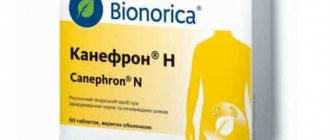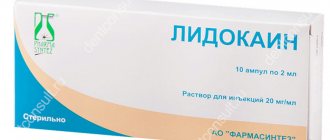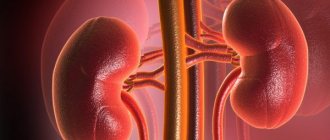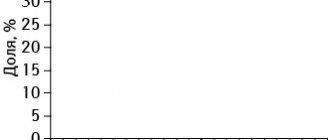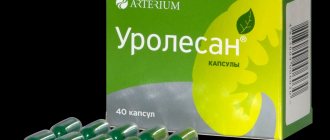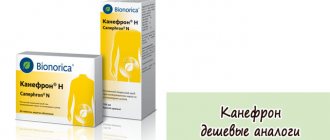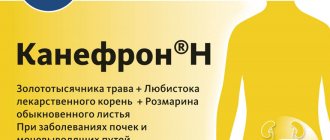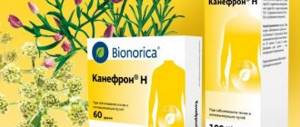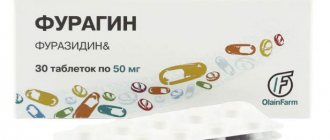Urolesan is a medicine that is often used in urology and less often in hepatology. The drug was obtained and studied in the seventy-seventh year of the twentieth century by Franz Ivanovich Mamchur .
All components of Urolesan are herbal:
- Fir oil . This essential oil is best suited for disinfecting the urinary tract and improves blood circulation, which helps to quickly flush out kidney stones. Partially relieves inflammation of the genitourinary system and is used against liver infections.
- Peppermint extract . This product has strong antiseptic properties. It improves digestion, disinfects the intestines and genitourinary passages, and also increases acidity in the large intestine, which promotes better absorption of food. Increases the secretion of cholesterol and bilirubin.
- Castor oil . Is a laxative. The effect occurs within 3-8 hours. Strengthens hair.
- Wild carrot extract . It has antiseptic properties and regulates carbohydrate balance in the body. It is used as a pain reliever, but has negative effects such as irritation of the mucous membrane. Recommended for urolithiasis and mineral metabolism diseases. Contraindicated for those with ulcers or gastritis.
- Juice of hop cones . It is a pain reliever for cystitis and urolithiasis. Helps remove kidney stones.
- Oregano herb extract . It is an excellent anti-inflammatory and antibacterial agent, superior to some antibiotics. Sometimes used as an antiallergic agent.
From the composition it becomes clear that the medication has an anti-inflammatory effect on the entire genitourinary system, increases blood flow to the kidneys and removes stones from them, and has strong antibacterial properties.
Brings the mineral composition of the urinary system back to normal, which reduces the risk of gout and improves the removal of sand and salts from the ureters.
Prescribed for cystitis, pyelonephritis, urolithiasis, cholecystitis, urinary tract dyskinesia.
Contraindications: Hypersensitivity to the constituent components. Gastritis and various ulcers.
Urolesan and its composition
Urolesan is a medicine that is prescribed for infections of the urinary system, pyelonephritis, and cystitis. It is based on natural substances. It contains fir and peppermint oil, castor oil, as well as hop cones and wild carrots. Many of the extracts included in the product contain an alcohol base, so it is not recommended for very young children.
Impact on the body
The medicine has the following effects on the body:
- Antiseptic (the likelihood of infection in the urinary tract is significantly reduced)
- Antispasmodic (removes spasms in the bladder and alleviates the general condition during urination, which is usually accompanied by unpleasant and very painful sensations)
- Sedative (relieves pain when stones pass and has a beneficial effect on the overall well-being of the body when urinary infections are detected)
- Diuretic (naturally increases the amount of urine excreted, which has a very beneficial effect on the body, prevents the occurrence of renal colic and congestion)
- Increases blood flow in the kidneys to prevent microliths from forming.
Dosage forms of Urolesan and instructions for use
Urolesan is a Ukrainian medicinal product and is available in three forms:
- Capsules or tablets (recommended for children over 14 years of age and adults, 1 tablet 3 times a day before meals. If renal colic occurs, you can double the dose only at this moment, and then continue to take according to the instructions. The course of administration is determined by the doctor. Usual period treatment from 5 days to one month)
- Syrup (recommended for children and adults. Children under 2 years old: 3 times a day, 1-2 ml., Children under 7 years old: 3 times a day, 3-4 ml., Children under 14 years old should be given 5 ml. every 8 hours. Adults are recommended to take 5 ml three times a day; in case of acute renal colic, you can increase the dose to 10 ml once and then continue to take the medication according to the instructions)
- Drops (recommended for children over 7 years of age and adults. The drug is very bitter. Children under 14 years of age take 5 drops every 8 hours daily. Children over 14 years of age and adults take 10 drops three times a day)
Contraindications for use
- Individual intolerance by the body to the components that make up its composition.
- Gastritis and other gastrointestinal diseases.
- Stomach ulcer.
- Duodenal ulcer.
- If kidney stones are detected.
- If you are allergic to any component of the medication.
Cheap analogues of foreign and Russian phytolysin
Phytolysin is a medicinal product for internal use in the form of a paste. Intended for the treatment of diseases of the urinary system, because
promotes relaxation of the smooth muscles of its components and the rapid removal of excess urine.
During the treatment, the functioning of the kidneys improves, colloids are formed that prevent the crystallization of minerals contained in the urine, i.e. prevention of urolithiasis is carried out.
Cheap analogues of Phytolysin
The medicine belongs to the medium price category, therefore it has cheaper substitutes for therapeutic effects. The only analogue of Phytolysin in composition is Fitolysin Prenatal soft capsules from the same manufacturer.
The average price for 100 grams of Fitolysin paste in Russian pharmacies is about 470 rubles. The list of cheaper substitutes includes the following drugs:
- Uronephron;
- Nolitsin;
- Phytolit;
- Urolesan;
- Ranel-N;
- Lespeflan;
- Canephron;
- Cyston.
Read further: Instructions for phytolysin paste with reviews
Uronephron
The herbal remedy includes many medicinal herbs that are indispensable for the health of the genitourinary system. This allows you to do the following:
- stimulate the production and flow of urine;
- relieve inflammation;
- destroy representatives of pathogenic microflora;
- improve the secretion and outflow of bile;
- increase the regeneration of damaged tissues of internal organs;
- remove toxic substances;
- strengthen local immunity.
The drug has three dosage forms - drops, gel for internal use and tablets. It is recommended to use it for infectious diseases of the genitourinary system, incl. prostatitis, kidney pathologies, prevention of urolithiasis.
However, of the phytolysin analogues, Uronefron has the largest list of contraindications, including renal failure, venous disease, disturbances in the alkaline balance of urine, pregnancy, age under 15 years, and others.
A significant plus is the price of the medicine, which averages 100-120 rubles.
Nolitsin
It is a broad-spectrum antibiotic, also prescribed for infectious and inflammatory diseases of the genitourinary system. Contraindications:
- hypersensitivity;
- pregnancy and breastfeeding;
- age under 18 years;
- lactose intolerance.
Photo of the packaging of nolitsin in 400 mg film-coated tablets
Use with caution for diseases of the liver and cardiovascular system. Price from 162 rub. for 10 tablets 400 mg.
Read: Complete instructions and analogues of nolicine
Phytolit
Another Ukrainian drug based on medicinal plants. Has the following effects:
- diuretic;
- anti-inflammatory;
- antispasmodic;
- painkillers;
- antimicrobial;
- antiseptic.
The main indications for taking capsules are inflammatory processes in the genitourinary system and the presence of stones in the bladder or kidneys. Therapy is contraindicated for pregnant women, nursing mothers, patients with intolerance to components, and children under 12 years of age. The cost starts from 170 rubles.
Urolesan
A cheap analogue of Phytolysin produced in Ukraine, produced in the form of drops for oral administration. Price – about 350 rubles. for 25 ml.
Urolesan relieves spasms, stops inflammatory processes, and destroys pathogenic microorganisms. It helps improve urine excretion, removes excess chlorides and urea, and stimulates the synthesis and outflow of bile. The plant-based product has almost no contraindications, except for allergies to components and dyspeptic disorders.
Urolesan is prescribed with caution for alcohol dependence, brain diseases and skull injuries, and liver pathologies. Prohibited for use during pregnancy and kidney stones larger than 3 mm.
Renel-N
A German remedy, produced in the form of tablets for resorption in the sublingual area, which is one of the advantages of the medicine - it tastes quite pleasant. The drug is capable of:
- stop inflammatory processes;
- relieve spasms of smooth muscles of the genitourinary system;
- relieve pain;
- improve urine flow;
- increase the body's natural defenses;
- normalize the functioning of the components of the urinary system.
Renel has indications for use similar to Phytolysin, but is prohibited only if the patient has hypersensitivity to the components and lactose intolerance.
Clinical trials of the drug for women carrying a child have not been conducted, but doctors around the world recommend the drug to expectant mothers, and there have been no cases of negative effects on the fetus or the course of labor.
At the same time, the price of the German analogue is slightly lower - about 380 rubles. per pack of 50 tablets.
Russian analogs of Fitolysin
There are practically no domestic analogues of Phytolysin in tablets and solutions for oral administration. Only Lespeflan can be distinguished - a solution for oral administration, costing about 210 rubles. for 100 ml. It has a pronounced anti-inflammatory and moderate diuretic effect, normalizes the acid composition of urine.
Lespeflan is contraindicated:
- women bearing a child;
- persons suffering from hypersensitivity to its components;
- diabetics;
- taking drugs that depress the nervous system.
What is better, Phytolysin or Urolesan for cystitis?
Phytolysin is a combined, broad-spectrum agent, and the main purpose of Urolesan is to relieve spasms and prevent urine and cholelithiasis, and genitourinary tract infections.
Therefore, in case of cystitis - acute infectious inflammation of the bladder, doctors recommend taking Phytolysin, because it also has a pronounced antimicrobial and antiseptic effect. However, neither one nor the other drug is able to cope with acute cystitis on its own; inclusion in the composition of antibiotics (Furagin, Furadonin) will be required.
When choosing a medication, contraindications should also be taken into account. Thus, Urolesan is prohibited for use in gastrointestinal diseases, diabetes mellitus and children under 7 years of age. Phytolysin has no age restrictions, but it is also contraindicated for:
- gallstones;
- renal failure;
- heart failure;
- hepatitis.
There is no data on the effects of Urolesan on the developing fetus, but, like Phytolysin, doctors often prescribe it during pregnancy.
The medications have a similar effect and are considered complementary to each other, so some patients try to take Urolesan and Phytolysin at the same time. Doctors also recommend doing this - it increases the effectiveness of both medications. You can also alternate days of treatment or undergo treatment with a combination drug first, and then preventive therapy.
It is difficult to say unequivocally which medication will help better cope with cystitis. The choice of drug depends on the individual health characteristics of the patient and it is better to entrust it to a doctor.
Read further: Exclusive about antibiotics for cystitis in women and men with lists and comparisons
What is better, Phytolysin or Canephron for cystitis?
Canephron is a herbal German drug, almost equal in cost to Phytolysin. Its therapeutic effect is:
- removal of small stones and sand from organs;
- relieving swelling;
- relief of pain and inflammatory processes;
- normalization of the functioning of all components of the urinary system;
- slowing down the activity of pathogenic microorganisms.
Canephron has two dosage forms - alcohol-based drops and tablets. Its contraindications include:
- allergic reactions to components;
- alcohol addiction;
- traumatic brain injuries;
- brain dysfunction;
- diseases of the digestive system;
- age up to 6 years (for tablets).
Pregnancy is not a contraindication for taking Canephron in tablet form, so the drug is successfully used in obstetric practice, because cystitis is one of the most popular diseases among expectant mothers.
Like Urolesan, Canephron is effective against inflammatory processes in the kidneys, urolithiasis and cystitis. However, the German pharmacological product has a more pronounced antimicrobial effect.
It should be noted that the medicine has a cumulative effect, i.e. The therapeutic effect is not felt immediately, but lasts for a long time. Therefore, in acute cystitis, Phytolysin is more often recommended, which quickly eliminates the pain symptom and relieves inflammation, and Canephron is more suitable for preventing relapse of the disease.
Is it possible to take Phytolysin and Canephron at the same time?
Combining drugs is prohibited, because the risk of side effects and overdose increases. It is better to give preference to one of the medications and the choice should be entrusted to a specialist.
Which is better, Phytolysin or Cyston?
Cyston is an Indian tablet product with a price similar to Phytolysin. Thanks to the combination of several medicinal herbs, it has a pronounced diuretic, litholytic and anti-inflammatory effect, and also prevents the formation of stones.
Among its direct indications are infectious diseases of the genitourinary tract, which include cystitis, but it is prohibited for acute pain and is not used in pediatrics. Therefore, it is usually prescribed to prevent exacerbation of the chronic form of the disease, and in case of relapses, it is more advisable to use Phytolysin.
During pregnancy, Cystone is prohibited from taking. As for Phytolysin, the annotation does not provide clear contraindications, based on the lack of clinical trial data, but obstetricians and gynecologists sometimes prescribe the drug to expectant mothers and no negative effects of treatment have yet been registered.
Review: 5 groups of antibiotics for the treatment of the genitourinary system in men and women
Source: https://lifetab.ru/deshevyie-analogi-fitolizina-zarubezhnogo-i-rossiyskogo-proizvodstva/
Canephron and its composition
Canephron is a complex drug that is also prescribed for infections of the urinary system, cystitis, pyelonephritis, and urethritis. It is used as an independent medicine or in combination with others, but exclusively as prescribed by your attending physician - a nephrologist.
It can also be used as a preventive measure to prevent the formation of stones and sand in the kidneys. Very often prescribed in the postoperative period. It contains rose hips, centaury, lovage root, rosemary, castor oil. All components included in the composition provide comprehensive treatment for these diagnoses.
The effect of canephron on the body
The drug has the following effects on the body:
- Antiseptic (disinfects any infection that penetrates the urinary tract)
- Diuretic (having a strong diuretic effect, helps remove stones and sand from the kidneys and improves their function)
- Antispasmodic (eliminates any spasms that arise due to infection or during the process of stones leaving the body)
- Anti-inflammatory (relieves inflammation that causes these types of urinary tract infections)
Types of canephron and instructions for use
Canephron is a medicine that is produced in Germany and exists on the pharmacological market in two forms:
- Drops (indicated for children and adults. For newborns - 10 drops, for children - up to 30 drops, for adults - up to 60 drops, which should be dissolved in water and taken three times a day. Since the drug has an overly bitter taste, it is recommended drip onto sugar and take in this form; for diabetics it is recommended to drip the drug onto bread)
- Capsules and tablets (indicated for children over 6 years of age and adults, 2 tablets three times a day. They should be taken with plenty of water. Increasing the dose and duration of treatment is prescribed only in consultation with a doctor. Increasing the dose of the drug on your own is prohibited)
Contraindications for use
- Individual intolerance to the components included in the drug.
- Allergy to components.
- Traumatic brain injuries.
- Brain injuries.
- Heart failure.
Instructions for use phytolysin tablets, paste
The product is available freely in pharmacies without a prescription. Instructions for its use in Russian are necessarily included with the gel. In addition, a description of the product, its photo and an annotation with recommendations on how to drink the suspension are freely available on the Internet, including on the popular resource Wikipedia.
During pregnancy, phytolysin
During pregnancy, especially in its early stages, it is recommended to use the cream exclusively under the supervision of the treating gynecologist. When breastfeeding, as well as during lactation, phytolysin is used only as prescribed by a doctor. It is necessary to approach the drug especially carefully when breastfeeding, since the components of the drug can cause allergic reactions in the child.
For cystitis
For cystitis, the course and method of treatment is determined by the doctor. The following dosage is usually prescribed: 1 teaspoon of cream is diluted with half a glass of warm boiled water and taken three times a day after meals.
Use for kidney stones
Phytolysin is also effectively used for kidney stones to dissolve them. In this case, the course of treatment and doses are selected by the doctor purely individually.
Instructions for use for hair, reviews
Many note another property of the panacea - its strengthening effect on weakened hair. To strengthen the hair, a special mask is made - the gel is evenly applied to the scalp, and then the head is insulated with plastic film and then with a towel. The mask is left for 3-4 hours and then washed off well with warm water.
For the genitourinary system
For the genitourinary system, phytolysin is often prescribed as a diuretic. However, a doctor must prescribe it; self-medication in this case is unacceptable.
What to choose: urolesan or canephron?
There is no clear answer to this question. You should always remember that you cannot prescribe any drug yourself, so you should consult a doctor who will choose the right course of treatment and select the right medication in accordance with the requirements of the body. Both drugs have almost identical pharmacological properties.
It should be noted that Canephron is the best drug at the moment, which successfully and quickly fights diseases of the urinary system, but its price is too high. It is for this reason that patients are looking for a complete analogue, but more acceptable in the price range. This analogue, which satisfies all the requirements for a medicine, is urolesan. There were no significant side effects from taking the medications.
Inflammation in the kidneys and urinary system often occurs when autumn and winter arrive. Often, exacerbation of ailments occurs during gestation. Chronic kidney diseases often worsen in pregnant women. Which is better, Canephron or Urolesan, is a pressing question for patients, because these are the drugs that are prescribed most often.
These funds are analogues. They are safe. Let's look at the features of medications, and also find out which one is better.
Reviews for Urolesan for cystitis
Each person always has his own opinion about drugs in accordance with the characteristics of the body. Before purchasing Urolesan, you should read the reviews of people who have already taken it.
- Elsa, 51 years old, Moscow. Many herbs cause allergies in women with cystitis; it is difficult to choose a high-quality composition on your own. And there is no time for all these brewings, tinctures, proportions. It’s so good that Urolesan exists. Reviews of Urolesan for cystitis , unfortunately, are not always positive. It is not suitable for everyone, not everyone takes it correctly, everyone has a different nature of the disease.
- Inga, 28 years old, Yekaterinburg. The drug was prescribed by a gynecologist. I was glad that the product was herbal. At first Urolesan helped a lot, but an allergy appeared. I am of two minds: the medicine has an excellent effect, but reactions develop during treatment.
- Evgenia, 24 years old, Kyiv. reviews of Urolesan drops for a long time, but didn’t believe them. Who will do the herbs? They'll stuff you with chemicals. But taste sensations proved the opposite. And the healing effect appeared within a day, and I no longer take painkillers.
- Natasha, 49 years old, St. Petersburg. Urolesan for cystitis in women is prescribed in a comprehensive manner. And do you know why? To cover up its uselessness with real medicine. I convinced myself. I took only Urolesan for a week - I drank water, no effect. Completely zero. So why is it needed?
Composition: what is the difference between Canephron and Urolesan
Both products contain herbal ingredients. Essentially, these are analogues. The doctor will determine which drug is best to take, depending on the disease, its severity, age, and individual characteristics of the body.
Urolesan is endowed with the following components: oregano, oils (castor, fir, mint), carrot seeds, hop cone extract. Canephron is endowed with: rosemary, centaury, lovage, rose hips.
Urolesan, Canephron: properties of medications
Canephron and Urolesan are prescribed with almost equal frequency for the treatment of diseases of the kidneys and urinary system of an infectious or inflammatory nature. The remedies have proven themselves well in the fight against cystitis and pyelonephritis.
According to the instructions, the use of Urolesan promotes:
- facilitating urine excretion;
- preventing the formation of stones, removing existing ones;
- improving the flow of bile;
- preventing the growth and reproduction of pathogenic microflora;
- eliminating pain and spasms;
- minimizing the inflammatory process.
Urolesan has pronounced anti-inflammatory, diuretic, disinfectant, and antispasmodic properties. Unlike Canephron, Urolesan also has a choleretic effect.
The use of Canephron promotes:
- preventing the growth and development of pathogens;
- normalization of kidney function;
- minimizing the inflammatory process;
- removal of stones, sand from the kidneys, bladder;
- eliminating swelling;
- minimizing pain.
From the annotation it is known about the following properties of Canephron: antiseptic, diuretic, anti-inflammatory, antispasmodic. Canephron together with Urolesan are effective in combating pathologies of the kidneys and urinary system.
Forms of production
Urolesan is a relatively cheap drug, manufactured in Ukraine and Russia . The medication is presented in the form of drops, capsules, syrup. Urolesan drops contain an alcohol component and are therefore not recommended for use by young children.
The capsules can be taken by adults and adolescents over 14. The syrup, which has a liquid consistency and a pleasant sweet taste, is intended for children from one year of age.
Canephron is more expensive. Produced in Germany . Forms of production: drops, tablets. The drops contain alcohol, but compared to Urolesan, they are allowed to be given to children. Canephron tablets are approved for use by adults and children over six years of age.
People often ask whether it is possible to take Urolesan at the same time as Canephron. It is not advisable, since both remedies have identical therapeutic effects. The simultaneous use of Urolesan with Canephron is fraught with a significant excess of the dose, as well as an increased risk of side effects.
Combination with other medications
Urolesan is most often prescribed to be taken together with other medications.
Urologists prescribe the drug in parallel with an antibiotic (for example, Nitroxoline) or antispasmodic drugs (for example, Spazmalgon). With this intake, side effects did not appear, regardless of the form of release of the drug taken. Sometimes the drug is prescribed in parallel with Canephron, which enhances the therapeutic effect, but only after an ultrasound.
Return to contents
Indications for use of Urolesan, Canephron
People often ask whether it is possible to take Urolesan instead of Canephron. Of course, yes, but only after prior consultation with a doctor.
Both drugs are effective in therapy:
Urolesan can be used for the treatment of urolithiasis - with the formation of stones not exceeding three millimeters in size, as well as cholelithiasis.
Both medications are effective in treating inflammatory processes in the bladder. Canephron has an antibacterial effect, therefore it is prescribed for the treatment of chronic forms without the auxiliary use of antibiotics. However, the product has a cumulative effect - that is, the result will not be noticeable immediately.
Urolesan, on the contrary, helps to quickly eliminate unpleasant symptoms, but it must be used together with antibacterial compounds. Urolesan (drops, syrup) can be taken by people suffering from peptic ulcers. Canephron is prohibited for people suffering from this disease.
It is advisable to ask your doctor if it is better to take Urolesan or Canephron for cystitis. He will select a drug taking into account all the subtleties, as well as the individual characteristics of the body.
How are the drugs similar?
Despite the fact that the composition of urolesan and canephron is radically different, nevertheless, the pharmacological properties of the drugs are almost the same. The following effects can be noted that both medications cause:
- Antispasmodic - drugs, entering the affected area, begin to reduce the strength of spasms of diseased organs, as a result of which the pain syndrome decreases, since usually the spasm is the result of the presence of small stones or a strong inflammatory process
- Anti-inflammatory - the presence of an inflammatory process is often the most common cause of pain and discomfort, and both drugs cope well with this phenomenon as part of complex therapy
- Diuretic - medicinal herbs not only help reduce pain, but also improve diuresis, which is necessary for various genitourinary disorders; a large volume of urine helps remove excess from the ureters, reduces severe swelling and removes the smallest stones in the form of sand
- Antiseptic - this property is very useful in the presence of an infectious lesion of the genitourinary system.
Also, both drugs improve the functional properties of the kidneys and reduce the permeability of small capillaries.
Contraindications, side effects
Every medicine, even those that consist of herbal ingredients, has contraindications. Canephron should not be taken by people with serious gastrointestinal diseases, problems with brain function, head injuries, predisposition to allergies, or individual intolerance. Children under six years of age should not be treated with medication (tablets). It is forbidden to use medicine (drops) for people suffering from alcoholism.
Inappropriate use, exceeding the dosage, frequency of administration, as well as independent extension of the course are fraught with:
- indigestion, stool disorders;
- nausea, vomiting;
- hyperemia, skin rashes, other signs of allergies;
- difficulty urinating, presence of blood in urine.
Dosage regimens, course duration
The doctor can select the regimen, dose, and frequency of use of the medication, taking into account the illness.
The regimen for taking Urolesan, according to the annotation, is as follows:
- syrup - 1 teaspoon 3 times a day;
- drops – drop eight drops onto a piece of sugar. Taken three times a day;
- capsules – one 3 times a day. The product is washed down with water - 200 ml.
The duration of the therapeutic course is a week.
Canephron is used according to the following scheme:
- children under one year old – ten drops 3 times a day;
- children 1-6 years old - fifteen drops 3 times a day;
- children over six – 25 drops or 1 capsule 3 times a day;
- adults – fifty drops or two capsules 3 times a day.
How long the therapeutic course will last is determined by the attending physician.
I'm very worried about the kidneys! Pediatric medicine
Help, who knows how to relieve an exacerbation of cystitis. It grabbed me unexpectedly. I don’t know anything other than bearberry and furadonin. Maybe someone knows what to do to make my fate easier?
I do not know what to do. Your advice is really needed.
The child is 9.5 months old. At 3.5 months. there was a rise in temperature to 39, urine tests were very good.
bad - 100 leukocytes in the p/zr, bacteria. The nephrologist diagnosed acute pyelonephritis.
Kidney ultrasound is normal. We were treated with antibiotics (Augmentin), the tests became good.
We started taking a maintenance course of furagin and canephron. A month later (at 5.5 months) the temperature was again 39 and leukocytes (20 in p/zr).
They drank Zinnat - the norm for 10 days, on the 10th day, while taking it, leukocytes returned. Passed...
I already wrote here that my daughter has leukocytes in her urine. A month ago there were 4-5 with clusters of 10-12, and now clusters are up to 26 (and maybe even more).
Another caprogram also contains leukocytes. And so we were prescribed 4 tablets for 10 days (this dose starts from 8 kg, and we weigh 7.6 kg), and it will help us against dysbiosis.
But 5 NOC is so bitter that, in my opinion, no matter how hard I try, my daughter spits out half of the medicine (I tried to start giving it three times, the last time was a few days ago). Or maybe this is good, since we are 8...
conf.7ya.ru
Use during pregnancy and lactation period
Pregnancy or breastfeeding are not contraindications for the treatment of inflammatory or infectious diseases of the kidneys, urinary system with Canephron.
This is a harmless medicine based on natural ingredients. It does not harm either a pregnant or breastfeeding woman or a baby. The medication does not have a detrimental effect on the course of pregnancy.
Canephron can be taken both in tablets and drops. The composition is taken in 2 capsules or 40 drops 3 times a day. The duration of the treatment course, the dosage is selected and adjusted by the doctor.
The effect of Urolesan on the body of a pregnant woman, as well as on the condition of the fetus, is not known . Whether or not a medication can be used during pregnancy or breastfeeding is decided solely by a specialist.
Cystitis. Pregnancy and childbirth
Girls, how do you deal with swelling? I take phytolysin, but somehow... Does not help
